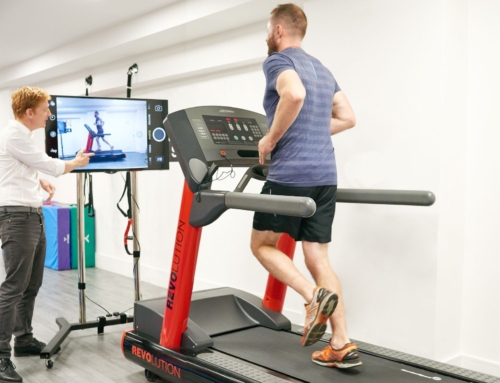
What is Lumbar Facet Joint pain?
Facet joint pain, or facet joint syndrome as it is sometimes called, is a condition that affects the joints that sit either side of your lumbar vertebrae.
If these joints are overloaded from a sudden injury, or become irritated from degeneration or overuse, it can cause a significant amount of pain, loss of movement and function.
Facet joint pain is one of the most common causes of low back pain and neck pain. It can affect anywhere along the spine, but usually affects the lumbar spine (low back) as this region of the spine bears a large amount of stress and weight, making it vulnerable to injury and degeneration. The most common site of facet joint pain in the lumbar spine is at the L4-L5 level followed by L5-S1.
Lumbar Facet Joint Anatomy
The spine is a long column of moveable bones called vertebrae. Each vertebra functions as a three-joint complex; like a tripod it has a large disc in the front and two facet joints in the back that sit either side of the vertebra. This design keeps the joints stable and strong, while also allowing the spine to bed and twist.
The surfaces of the joints are covered in a very smooth layer of cartilage which minimises joint friction. A fluid filled capsule surrounds each joint, and provides lubrication.
Like any other joint in your body, the job of your facet joints is to provide healthy, normal movement and, along with the intervertebral disc and ligaments, provide stability for each spinal segment. The intervertebral discs also act as shock absorbers and reduce the impact going through the spine.
The lumbar spinal nerves exit just above the facet joint at each level, and provide sensory and motor control to the lower part of the body.

The primary functions of the lumbar facet joints are:
- To allow considerable range of movement in multiple directions – flexion, extension, rotation and side flexion.
- To absorb loads – the lumbar facets absorb compressive and shearing forces placed on the spine during spinal movements and when standing erect.
- To provide protection – the facet joints protect the vertebral discs, spinal nerve roots, and spinal cord by helping to guide and limit the movement of that spinal segment. This prevents the vertebrae from engaging in movements that can overload and damage the surrounding spinal structures.
- To contribute to proprioception (the ability to sense movement and position of the body and limbs in space) – the nerves that supply the facet joint capsule help contribute to lumbar proprioception.
What Causes Lumbar Facet Joint Pain?
Lumbar facet joint pain is mostly caused by a facet joint injury, which results in that segment becoming either very stiff, or overstretched and too mobile. It can also be from excessive wear and tear of the facet joints; sometimes there is a combination of the two.
The pain often arises from a response by the surrounding tissues and not necessarily from the joint itself. The spine is a very complex structure; there are 33 vertebrae (5 in the lumbar spine L1-L5), with intervertebral discs, and an elaborate system of muscles, nerves, ligaments and tendons. More often than not, injury or wear and tear of the facet joint, can lead to inflammation, muscle spasm, or the nerves becoming hyper-sensitised. These are all symptoms that are very treatable with Physiotherapy and conservative management.
Degenerative Disc Disease can also cause secondary Facet Joint Syndrome. This happens when the lumbar discs start to degenerate from wear and tear, and the space between the lumbar vertebra becomes smaller. This leads to a build up of added pressure on the facet joints, and as this continues the facet joints themselves can also become worn, causing irritation and pain. Eventually this leads to osteoarthritis (‘wear and tear’) of the lumbar spine.
Risk Factors of Lumbar Facet Joint Pain
- Obesity – being overweight can put more pressure on the joints in the lumbar spine
- Playing contact sports such as football or rugby
- Playing high impact sports such as basketball, netball, gymnastics or dance
- Playing rotational sports such as golf, hockey or tennis
- People who have manual jobs involving heavy lifting or repetitive bending
- Trauma to the lumbar spine
- Age – Pain caused by facet joint degeneration is more common in people over 40. Pain caused by trauma, overuse, or an overstretch of the joint is more common in people under 40.
- If you suffer from degenerative disc disease, you are more likely to have facet joint pain.
- Poor spinal posture or deformity
What are the symptoms of Lumbar Facet Joint pain?
Commonly symptoms appear as sporadic episodes of localised, low back pain that are intermittent and usually occur a few times a year. If symptoms are left untreated, these episodes can become more severe and frequent.
Occasionally pain can radiate down into the buttocks and back of the thigh, but will rarely go past the knee.
Usually the pain and symptoms are localised to one side of the back and buttock/thigh, however pain can occur bilaterally (on both sides) if both facets joints at a spinal segment are affected – this is much less common.
Depending on the number of facet joints affected, the severity of the condition, and the possible involvement of a nearby nerve root, one or more of the following signs and symptoms may occur:
- Localised, dull ache in the lower back.
- Referred or radiating pain into the buttock/back of the thigh – if a spinal nerve is irritated at the facet joint, a sharp, shooting pain (sciatica) can be felt down the leg.
- A feeling of muscle weakness may also occur in the affected leg.
- Tenderness on palpation – the pain may become more pronounced when the area in the lower back is gently pressed.
- Increased pain with rotating, twisting or bending the spine backward.
- Increased pain with heavy activity or exercise.
- The pain may be relieved when bending forward.
- Stiffness in the lower back – typically felt more in the mornings or after a period of inactivity, and usually relieved after resuming normal activity.
- Crepitus – a feeling of grinding or grating in the back joints with movement.
If the pain does radiate into the lower leg, especially if associated with numbness or pins and needles it is more likely to be due to degenerative disc disease but the two conditions can occur simultaneously due to the proximity of both joints.
The symptoms of facet joint pain can mimic many other spinal conditions such as spondylolisthesis, therefore it is very important to see an experienced healthcare professional to get an accurate diagnosis.
If you have any of the above symptoms or are concerned that you have a facet joint injury then please get in touch with us at Complete, to book an appointment.
How is Lumbar Facet Joint Syndrome diagnosed?
A lumbar facet joint injury is most accurately diagnosed by a specialist physiotherapist, who will perform a highly skilled and in depth hands-on examination. Using their professional skills, they will assess each level of your spine and confirm the specific facet joint that is causing the problem, and whether it is locked, stiff or unstable.
Your spinal physical assessment will also include assessing:
- Range of movement
- Muscle strength
- Sensory impairment
- Reflexes
- Spinal posture
- Pelvic and core stability
Imaging studies, such as X-ray, CT, or MRI, may be ordered to help in the diagnosis and to check for other spine related problems.
If your Physiotherapist feels that you need a scan, they will be able to refer you to a specialist consultant or clinic.
How is Lumbar Facet Joint Pain Treated?
Mechanical low back pain caused by facet joint injury is treated conservatively as a first line of action.
Physiotherapy
There are a number of treatment options that your physiotherapist will discuss with you, and together you will work out a treatment plan based on the source of your symptoms, and your own, personal goals.
Your treatment will likely include some or all of the following:
Medication
The most common kinds of medications prescribed to help control symptoms of facet joint syndrome include painkillers, nonsteroidal anti-inflammatory drugs, and muscle relaxers. You should always seek medical advice before taking any medication.
Soft Tissue Therapy
Massage is incredibly useful to help reduce muscle spasms and tension, it also has relaxation benefits.
Acupuncture or Dry Needling

Acupuncture has been used for thousands of years to help with pain and muscle spasm.
Back Stretches
You will be given stretching exercises to improve joint range and muscle length.
Joint Mobilisations and Manipulations

Your physio will also likely do some ‘hands on’ joint mobilisations to work on any localised facet joint stiffness or locked joints.
Posture Re-education
Your physiotherapist will work on your posture and movement patterns, and correct any abnormalities. They may also carry out an ergonomic assessment, if your symptoms are aggravated by sitting at work.

Strength and Endurance
You will commence a strengthening programme that specifically focuses on back stability, and targets the deep postural muscles that dynamically control and stabilise your lower back and pelvis.
Your physiotherapist may also suggest that you commence a course of Pilates, which is a highly effective way of improving mechanical low back pain, specifically facet joint pain.

Restoring Full Function
Depending on your occupation, or chosen sport or activities, your physiotherapist will tailor your rehabilitation to work on specific tasks or functional movements, to allow you to return to your desired activities safely.
At Complete Physio we are experts at the treatment and management of facet joint pain. We are dedicated to getting our patients out of pain and back to full function.
Lumbar Facet Joint Injections
A facet joint injection is a minimally invasive procedure that involves injecting a combination of numbing medications (anaesthetic) and corticosteroid (also known as steroid or cortisone injections). Facet joint injections are carried out using X-ray (known as fluoroscopy) guidance. The corticosteroid works on the nerves around the facet joint, reducing their ability to carry pain signals to the brain and the steroid helps decrease the inflammatory reactions in the facet joint, reducing the pain. Your Physiotherapist can refer you to a spine or pain consultant who can administer these injections.
The pain relief can last from a few weeks to years and if you experience a recurrence of pain, the procedure can be repeated.

Injections should not be used as a stand alone treatment, but should be part of a multi pronged approach, which includes physiotherapy. Once your pain has settled from the injection (approx 1 week), you should re commence your rehabilitation under the guidance of your Physiotherapist at Complete.
Surgery for Lumbar Facet Joint Pain
Surgery is rarely required for facet joint pain, however if all other treatments do not relieve your symptoms then a spine fusion surgery may be an option. This usually occurs when there is nerve root compression from enlarged facet joints, degenerative disc disease, or spinal instability.
If your physiotherapist feels that you would benefit from a surgical review, you will be referred to one of the highly skilled and well trusted Spinal Consultants who we work closely with. Post operatively you will need further rehabilitation to maximise your recovery and get you back to full fitness.
If you would like to book an appointment or speak to one of our expert physiotherapists please call 020 7482 3875 or email info@complete-physio.co.uk.
Don’t let pain hold you back, book now!




